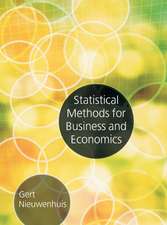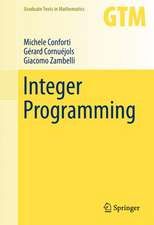Dynamics of Technological Change
Autor Girifalcoen Limba Engleză Paperback – 29 mar 2012
Preț: 401.24 lei
Nou
Puncte Express: 602
Preț estimativ în valută:
76.80€ • 79.14$ • 64.84£
76.80€ • 79.14$ • 64.84£
Carte tipărită la comandă
Livrare economică 03-17 martie
Preluare comenzi: 021 569.72.76
Specificații
ISBN-13: 9781468465112
ISBN-10: 1468465112
Pagini: 548
Ilustrații: 524 p.
Dimensiuni: 152 x 229 x 29 mm
Greutate: 0.73 kg
Ediția:Softcover reprint of the original 1st ed. 1991
Editura: Springer Us
Colecția Springer
Locul publicării:New York, NY, United States
ISBN-10: 1468465112
Pagini: 548
Ilustrații: 524 p.
Dimensiuni: 152 x 229 x 29 mm
Greutate: 0.73 kg
Ediția:Softcover reprint of the original 1st ed. 1991
Editura: Springer Us
Colecția Springer
Locul publicării:New York, NY, United States
Public țintă
ResearchCuprins
1. Basic Concepts of Technological Change.- Defining Technological Change.- Measuring Technological Change.- Theories of Technological Change.- Determinants of Technological Change.- Enterprises, Systems, and Hierarchies.- Five Patterns.- Interactions Among Systemic Trends.- A Systemic Model of Technological Change.- 2. Technical Progress and Performance.- Aspects of Technological Progress.- Measurement of Technical Performance.- Case Study: Aviation.- The Learning Curve.- Production Costs and the Learning Curve.- Case Study: Farm Tractors.- Case Study: Underground Coal Mining.- 3. Innovation, Research, and Development.- Clusters and Waves.- Frequency of Innovation.- The Origin of Clustering.- Inventions and Time Lags.- Innovation and Business Cycles.- The Origins of Innovations.- The Effect of Corporate Size.- Functions of R&D.- Definitions of Success in R&D.- Technological Cycles and R&D.- The Technology-Driven Corporate Cycle.- Technological Discontinuities.- The R&D Portfolio.- Characteristics of Industrial R&D.- Determinants of Successful R&D.- 4. Technological Diffusion and Substitution.- Technological Diffusion.- Diffusion Analysis.- Substitution Analysis.- Multilevel Substitution.- The Diesel Locomotive: An Example of Binary Substitution.- The Diffusion of Radio Broadcasting.- Steelmaking: An Example of Multilevel Substitution.- Results of Diffusion and Substitution Studies.- Nuclear Power: A Case of Interrupted Substitution.- Diffusion and the Clustering of Technologies.- Some Comments on Causal Factors.- 5. The Dynamics of Energy Usage.- The Energy Transition.- Energy Sources.- Energy in the Economy.- The Efficiency of Energy Utilization.- Patterns of Consumption.- The Energy Inventory.- Patterns of Production: The Hewett-Hubbert Model.- 6. The Electronic Digital Computer.- Significance of the Computer.- The Precursors.- COLOSSUS.- The ENIAC.- Turing and von Neumann.- Downfall of the Moore School.- Post-Eniac Machines.- Computer Companies.- Evolution of Modern Computer Technology.- Computer Performance.- Diffusion of Computers.- Summary.- 7. The Industrial Transition.- Measures of Industrialization.- World Industrialization.- Economic Growth and Industrialization.- Postwar World Economic Growth.- Catch-Up.- The First Transition.- The American Transition.- Material Resources.- Materials and World Industrialization.- Appendix 1. Mathematics of Technological Growth.- Forms of Growth Laws.- Properties of the Exponential.- Properties of the Logistic.- Properties of the Decaying Exponential Rise.- The Gompertz Equation.- Superacceleration.- Competitive Growth.- Multilevel Substitution.- The Lognormal Distribution.- Horizontal Analysis.- Learning Curves and Technological Progress.- Data Smoothing.- Appendix 2. Chronology of Innovation.- Appendix 3. Data Tables.- List of Tables.- References.- Additional Readings.










